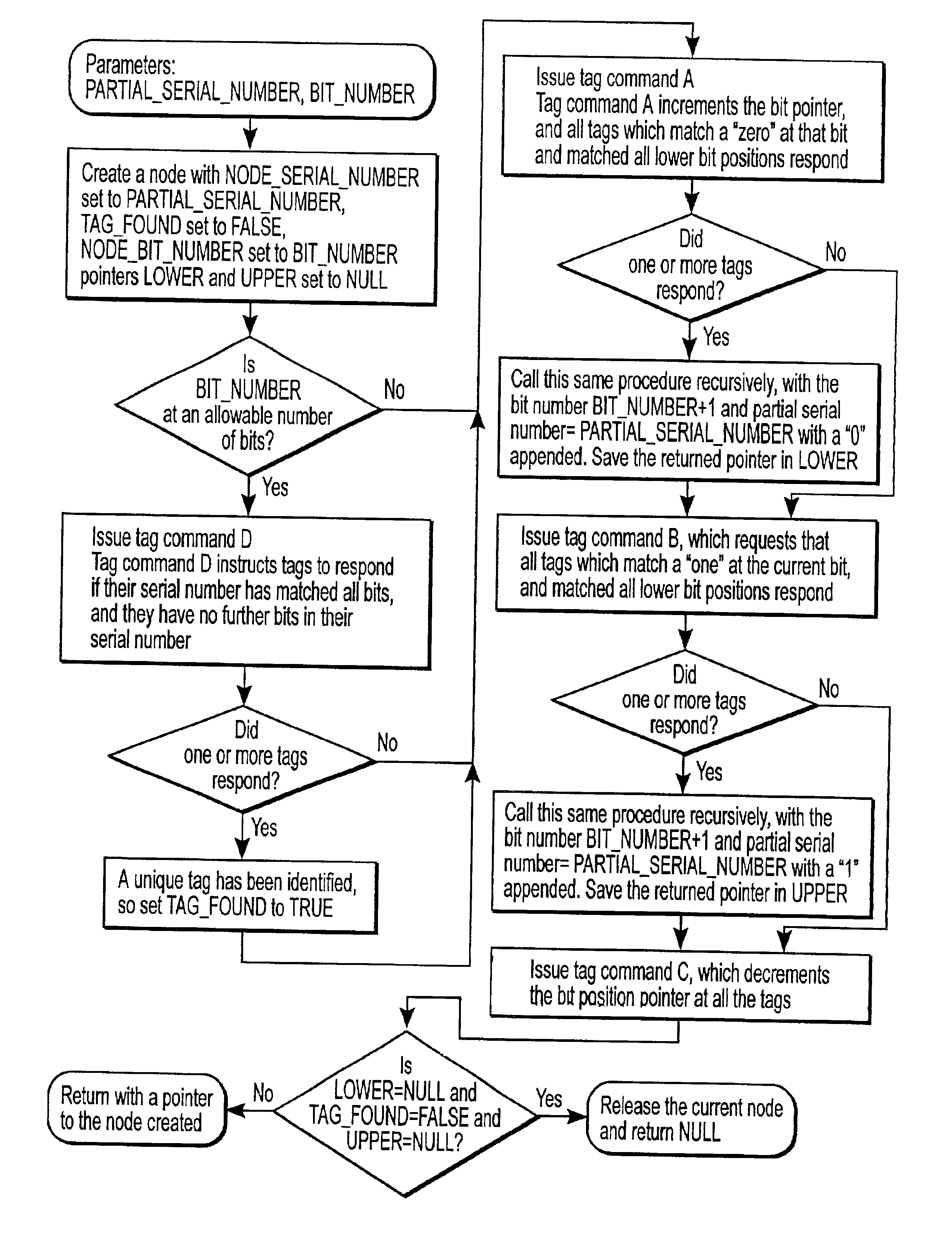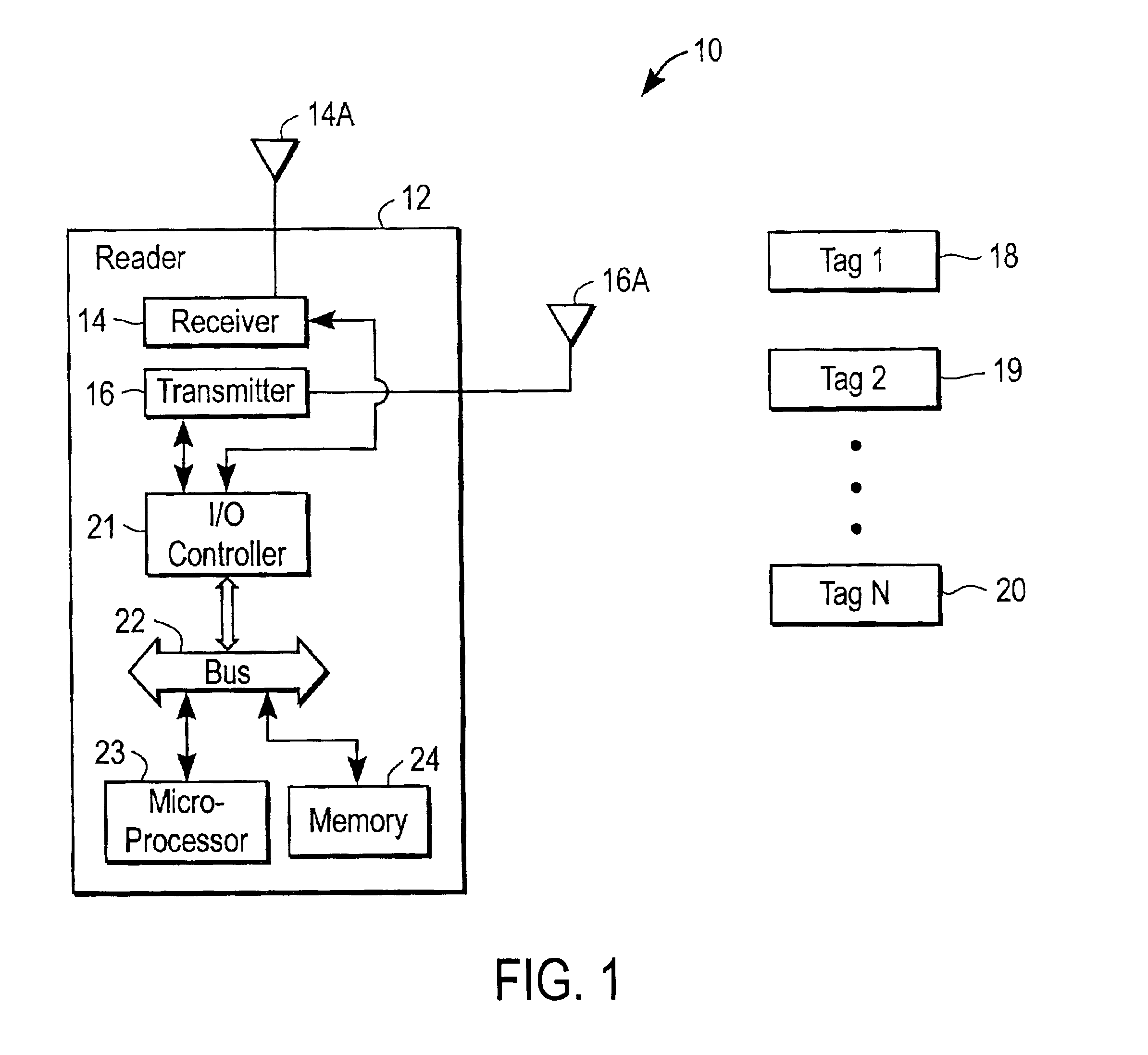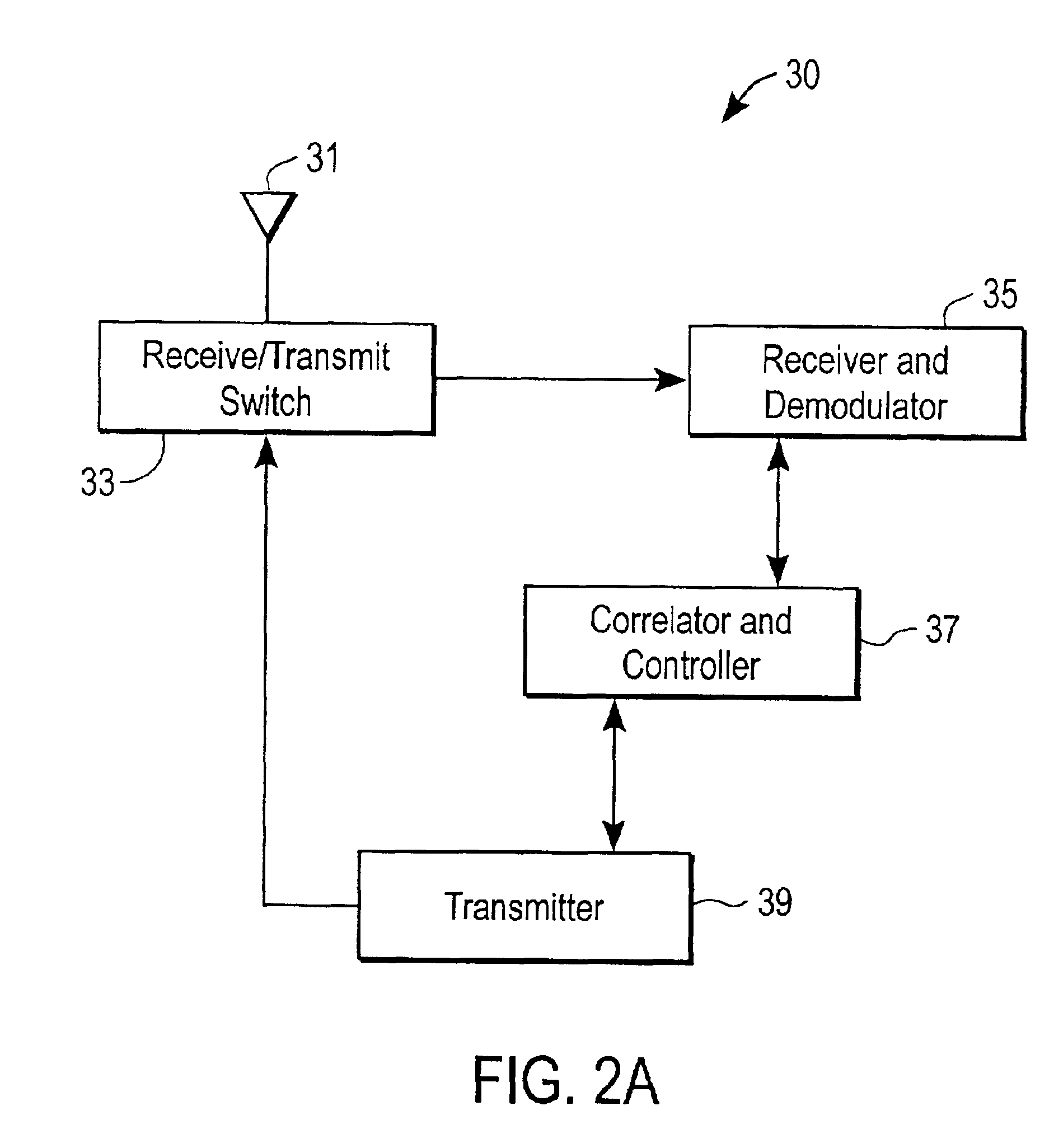Methods and apparatuses to identify devices
a technology of identifying devices and methods, applied in the field of devices having an identifier, can solve problems such as requiring considerable logic, extending the range of the reading system, and corrupting each other
- Summary
- Abstract
- Description
- Claims
- Application Information
AI Technical Summary
Benefits of technology
Problems solved by technology
Method used
Image
Examples
Embodiment Construction
[0023]The subject invention will be described with reference to numerous details set forth below, and the accompanying drawings will illustrate the invention. The following description and drawings are illustrative of the invention and are not to be construed as limiting the invention. Numerous specific details are described to provide a thorough understanding of the present invention. However, in certain instances, well known or conventional details are not described in order to not unnecessarily obscure the present invention in detail.
[0024]FIG. 1 illustrates an example of an identification system 10 which includes a reader 12 and a plurality of tags 18, 19, and 20. The system is typically a reader-talks-first RF ID system using either passive or semi-passive active backscatter transponders as tags. The incorporation of a battery and / or memory into a tag is an expanded feature to facilitate longer read range; however, the use of the battery does require certain trade-offs, such as...
PUM
 Login to View More
Login to View More Abstract
Description
Claims
Application Information
 Login to View More
Login to View More - R&D
- Intellectual Property
- Life Sciences
- Materials
- Tech Scout
- Unparalleled Data Quality
- Higher Quality Content
- 60% Fewer Hallucinations
Browse by: Latest US Patents, China's latest patents, Technical Efficacy Thesaurus, Application Domain, Technology Topic, Popular Technical Reports.
© 2025 PatSnap. All rights reserved.Legal|Privacy policy|Modern Slavery Act Transparency Statement|Sitemap|About US| Contact US: help@patsnap.com



